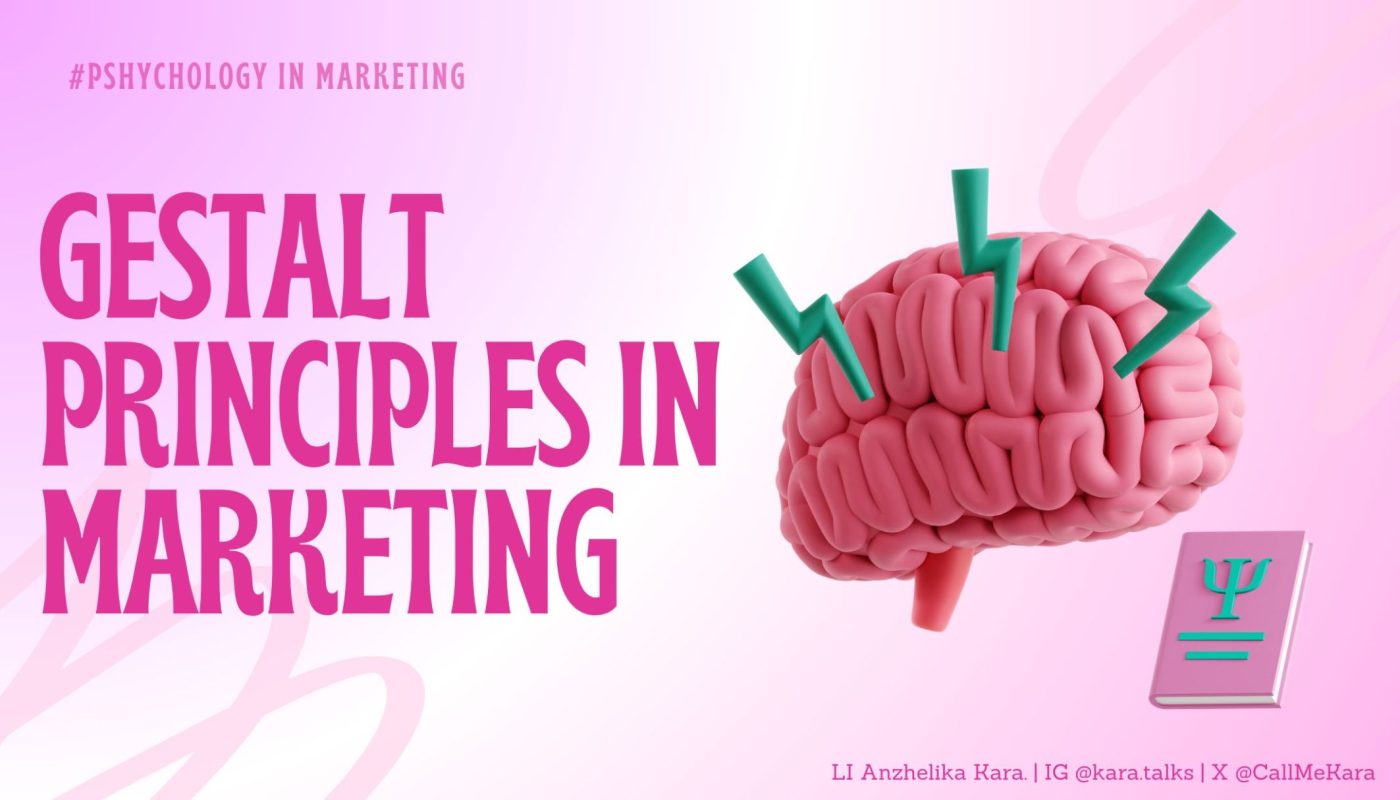Gestalt Principles in Marketing:
Harnessing Gestalt Principles for Powerful Marketing Strategies
Understanding how your audience processes visual information can significantly amplify the impact of your campaigns. Gestalt psychology, a theory developed in the early 20th century, offers insights into the human mind’s ability to perceive and interpret patterns and objects as whole systems rather than just their parts. This understanding is crucial for creating marketing materials that are not only visually appealing but also effectively communicate the intended message and make it more memorable to the consumers. Here are the key principles of Gestalt theory and how they can be applied in marketing:
1. Embrace the Law of Simplicity
The Law of Simplicity, or Pragnanz, suggests that individuals naturally perceive and interpret complex images in the simplest form possible. For marketers, this translates into designing logos, ads, and webpages that are clear and straightforward, ensuring that the brand message is easily absorbed. Simplicity helps in cutting through the noise of a crowded marketplace, enabling your brand to be recognized swiftly and remembered long-term.
2. Utilize the Law of Proximity
This principle posits that objects placed close to one another are perceived as a cohesive group. Marketers can leverage this by grouping related products or information on a webpage to suggest they are interconnected. This not only aids in conveying product relationships but also enhances the user’s navigation experience, potentially increasing the likelihood of cross-selling and up-selling.
3. Apply the Law of Similarity
The Law of Similarity states that elements sharing similar attributes (such as color, shape, or size) are viewed as part of a pattern or group. This is particularly useful in creating a unified brand identity across different marketing channels. Consistent use of color schemes, fonts, and design motifs across all touchpoints reinforces brand recognition and fosters consumer trust.
4. Guide with the Law of Continuity
According to the Law of Continuity, the human eye prefers to follow a path, line, or curve. Marketers can design visual content that guides the viewer’s eye in a flowing, uninterrupted manner towards important elements like calls to action. This not only enhances the aesthetic appeal of the design but also subtly directs the consumer towards a desired interaction, such as making a purchase or signing up for a newsletter.
5. Engage through the Law of Closure
This law suggests that people often perceive incomplete shapes as complete. Marketers can use this principle to create intriguing, memorable logos and designs that engage consumers by inviting them to mentally fill in the missing pieces. Such engagement makes the interaction with the brand more memorable, enhancing the likelihood of forming a lasting brand impression.
6. Highlight with the Law of Figure/Ground
The Law of Figure/Ground differentiates an object from its surrounding area, making the object (figure) stand out against the background (ground). In marketing, this can be effectively used in logo design or in key visuals of ad campaigns where the product needs to be the focal point against a less prominent background, ensuring it captures and holds the viewer’s attention.
7. Narrate with the Law of Common Fate
Elements perceived as moving in the same direction are seen as more related than those that are static or moving in different directions. This principle can be creatively applied in video ads or dynamic online content, where movement can be used to narrate a story or highlight key product features, making the overall message more cohesive and compelling.
Conclusion
Understanding and applying Gestalt principles allows marketers to create visually appealing and psychologically engaging content that resonates deeply with consumers. By aligning marketing strategies with how audiences inherently process visual information, brands can craft campaigns that not only look great but also communicate more effectively, ensuring that their messages stick in a meaningful and impactful way.
For more insights on Digital and Ethical Marketing please follow me on my social media:
LinkedIn – Anzhelika Kara.
Twitter – @CallMeKara
Instagram – @Kara.Talks
References:
Rock, I., & Palmer, S. (1990). The legacy of Gestalt psychology. Scientific American, 263(6), 84-90. https://doi.org/10.1038/scientificamerican1290-84
Behrens, R. R. (2005). Art, Design and Gestalt Theory. Leonardo, 31(4), 299-303. https://www.jstor.org/stable/1576846
Barry, A. M. S. (1997). Visual Intelligence: Perception, Image, and Manipulation in Visual Communication. SUNY Press. [No DOI or URL available]
Koffka, K. (1935). Principles of Gestalt Psychology. London: Routledge & Kegan Paul. [No DOI or URL available]
Wertheimer, M. (2012). Gestalt Theory. Salem Press Encyclopedia. [No DOI or URL available]





Really intresting and extremely useful content for me as marketing student, thank you! 🙂
My pleasure The Matcha Enthusiast’s Diary, happy to be helpful!